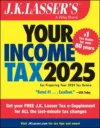How Low-Income Filers Get Stimulus Checks
Certain taxpayers who are not otherwise required to file a tax return because their income is below the filing threshold must do so this year in order to receive a rebate check under the Economic Stimulus Act.
Who qualifies
Rebate checks of $600 for singles and $1,200 for joint filers are being sent to individuals with 2007 adjusted gross income up to $75,000 if single, or $150,000 on a joint return. Checks of $300 ($600 for joint filers) are also being sent to certain taxpayers with income below the thresholds that normally require the filing of a tax return:
- Low-income earners with earnings of at least $3,000 who do not pay income taxes.
- Seniors with earnings below $3,000 who receive at least $3,000 of Social Security benefits (about 20 million seniors) but are not required to a file a tax return.
- Veterans with earnings below $3,000 who receive at least $3,000 of disability benefits (about 250,000 veterans) but are not required to file a tax return.
Note: Individuals who can be claimed as a dependent on another taxpayer’s return are ineligible to receive a rebate check, regardless of their income.
What form to file
The IRS has created a special Form 1040A to be used by these individuals so they can receive their rebate checks. It is a regular Form 1040A, but the IRS has highlighted the specific areas that need to be completed, making it easier to file; only a few lines need to be filled in. Taxpayers can, of course, choose to file a regular Form 1040. Either way, be sure to write “STIMULUS PAYMENT” across the top of the form.
The IRS will be mailing out informational letters in March to taxpayers advising them about the rebate process; you do not have to respond to the letter. However, only those who filed returns for 2006 will receive a letter. If you are eligible for a rebate check, don’t let the fact that you failed to receive a letter stop you from filing for it this year.
Electronic filing
Usually, electronic filing can be done only if a taxpayer has a minimum of $1 of adjusted gross income, something that these low-income individuals may not have. However, the IRS has created a special rule for them this year. Those with at least $3,000 in nontaxable income, such as Social Security benefits or veterans’ disability payments, can still file a 2007 return electronically by claiming to have AGI of $1 (a fictitious statement).
Those filing paper returns need not include the $1 AGI entry; their actual AGI of zero is fine.
Tenants in common
Two or more persons who have undivided ownership rights in property. Upon death of a tenant, his or her share passes to his or her estate, rather than to the surviving tenants.



